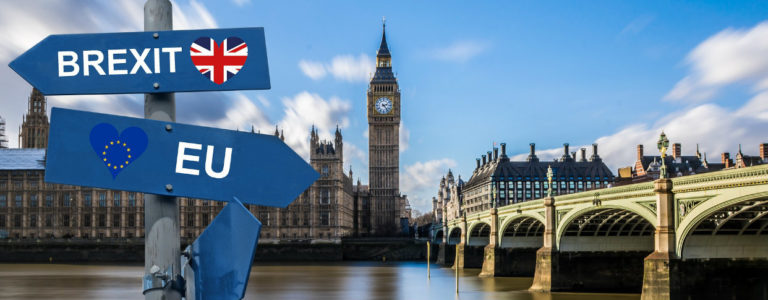How politicians tried to sell Brexit to us

Founder of MK, Steve McKevitt, speaks about Brexit in his recent Oxford University Press article: https://blog.oup.com/2018/12/how-politicians-tried-to-sell-brexit/
If we examine the two campaigns in terms of their message strategy, i.e. the way in which they sought to influence swing voters, significant differences become apparent.
Remain is widely regarded to have been poorly executed – not a difficult accusation to sustain, given that it lost – however, I’d argue that it was not the execution, but the message strategy that was flawed. From a brand communication perspective its campaign is built on a classic proposition: Britain – Stronger in Europe. This message easy to understand and virtually impossible to misinterpret. The four words work really hard and they clearly map out a defensible position: whoever you are, you will be wealthier if we stay in the EU and poorer if we leave. Therefore, life for you and your family will be much better if you vote to Remain.
This message also enjoyed robust endorsement from an impressive list of individuals and organizations that included not only the UK Government but also the Official Opposition, the IMF, Bank of England, CBI, US President Barack Obama, and not least the EU itself. The message was clear:
Remain campaign is a text-book example of “Message into Action” or rational model of brand communication. It is widely used and underpins most brand communication – indeed for much of the 20th Century it was the only the method employed. Rooted in classical economics, this model assumes that human behaviour is rational and, therefore, that decisions are predictable. Consumer choices are influenced by two factors, wants and constraints, which lead people inevitably towards a compromise. For example, someone looking for a new car might want to buy a prestige two-seater sports car, but the constraint on their choice is that they only have a budget of £10,000 and need a vehicle capable of transporting their family around. In these circumstances they would choose the vehicle that goes furthest to meeting their wants within those constraints.
Remain reasoned, quite compellingly, that people were unlikely to vote for something that was going to make them poorer, or make their lives more difficult. Yet in reality, that is exactly what they appeared to do.
On the face of it the Leave’s offer was far less coherent than Remain’s. For a start there were two separate Leave campaigns running in parallel. The official cross-party Leave group ran with Take Control but there was also an unofficial campaign, led by UKIP leader Nigel Farrage under the much blunter headline We Want Our Country Back. They are in fact somewhat devoid of meaning – ‘Platitudes’ Michael Heseltine called them – and the more one dug into them, the more ephemeral they seemed to be. The two statements seem to imply something to do with sovereignty and sound empowering, but there was no real attempt (God forbid) to advance the rational argument for increased parliamentary sovereignty at the expense of reduced control over the machinations of the European Union. Nor was there a coherent economic case made for independence.
In Leave’s defence, their campaign was necessarily nebulous. What Brexit would actually look like – hard/soft/Norway/Switzerland/Canada/WTO rules – was anyone’s guess. Beyond vaguely recognizing that ‘people’ were tired of ‘interference from Brussels’ and literally suggesting that anything might be better, there was not an awful lot in Leave’s campaign to hang your hat on.
For that reason, the Leave campaign slogans are not rational propositions, but emotional appeals. ‘Emotion into Action’ or the emotional model is alternative method for the creation of brand communication that emerged during the 1980s. Based on findings in the fields of cognitive psychology and behavioural economics, it is the method by which modern corporate brands communicate. The key difference between the two models is the starting point. The development of rational appeals begins with an interrogation of the product, but emotional appeals focus on the consumer.
Emotional appeals have proven to be hugely more compelling than their rational counterparts. A rational appeal is enough to persuade us to by a soap powder because it washes whiter, but an emotional appeal is what persuades us to buy Nike because it is Nike.
And when an emotional appeal comes up against a rational appeal something interesting happens: the emotional appeal comes out on top, almost every time. In fact, they are so compelling, they can even override sensory information. By rational argument I may be able to successfully convince you that my trainers, car and phone offer you the best value for money, but you will still buy the Nike, the Audi, and the Apple.
As Remain found to its cost, it is very difficult to reason people out of a position they have not reasoned themselves into. In such circumstances, rational arguments are about as effective as trying to stop a runaway bus by hurling ping-pong balls at it.
Leave succeeded because their campaigns invited voters to project their own meaning onto nebulous slogans. What does We Want Our Country Back actually mean? Well it means whatever people wanted it to mean: ask 100 different Leave voters and you’ll get 100 bespoke answers, each one nuanced towards the hopes, opinions, desire’s and prejudices of the individual. One might just as well ask what is the meaning of Nike’s Just do it or Apple’s Think Differently. The objective was to influence what people felt about Brexit not what they thought about it. Vorsprung Durch Technik?